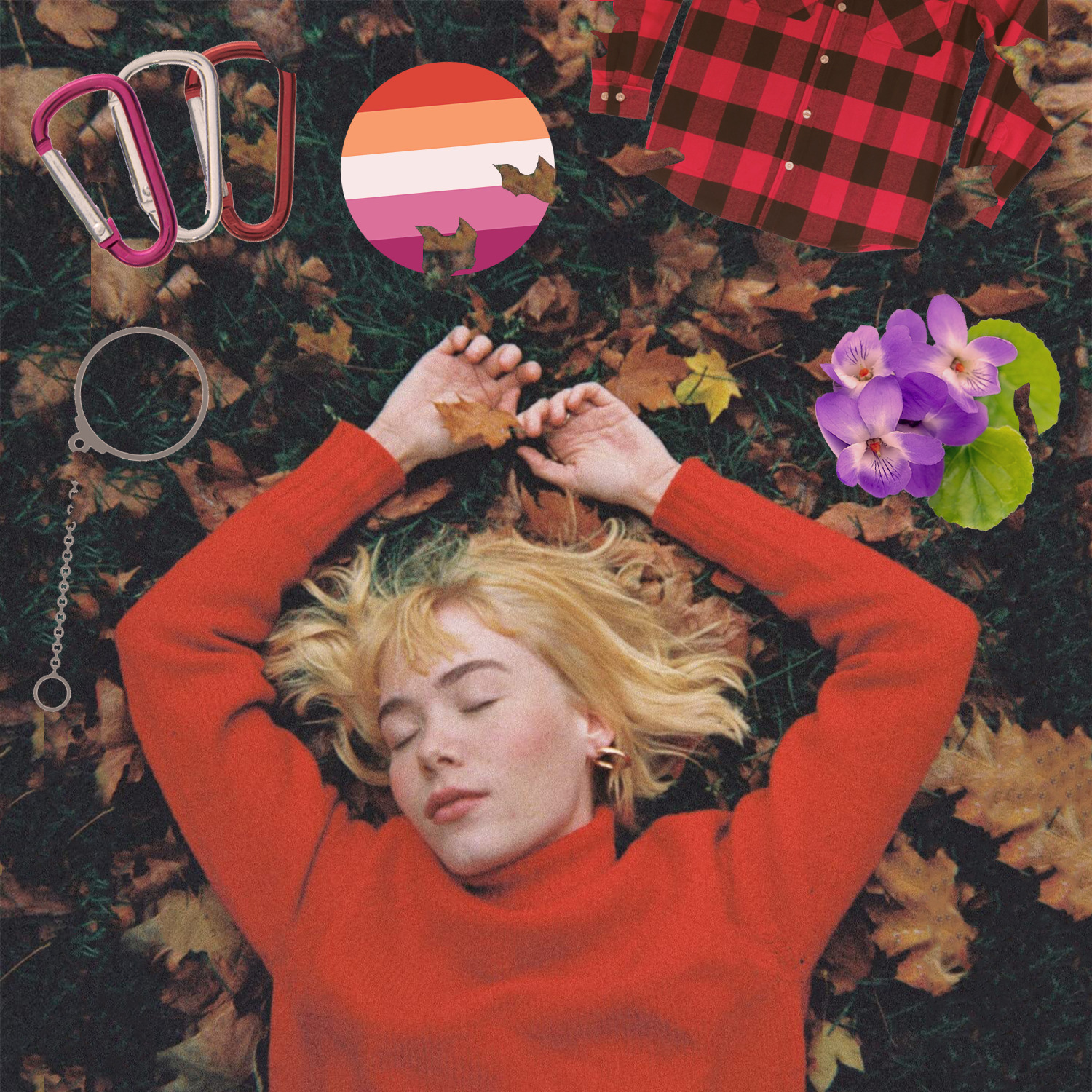Graphic by Christopher Ikonomou (Xe/He)
Now, modern queer and WLW communities have adapted queer signaling to their own fashion and pop cultures. girl in red, a Norwegian indie pop band headed by WLW singer-songwriter Marie Ulven, is one of these symbols. She released one of her first popular songs, “i wanna be your girlfriend,” in 2017, where she sings to someone named “Hannah” about how her true feelings for them extend past friendship and into romantic and sexual desires. She had released her very first song “you used me for my love” earlier in 2017. Many of Ulven’s other songs, in addition to tackling mental health issues, are candidly about her romantic relationships with women. Most notably, her songs “girls,” “bad idea!” and “we fell in love in october” have become anthems of the WLW community to the point that asking, “Do you listen to girl in red?” is code for asking a woman if she is gay. It’s a subtle yet effective way of inquiring about a woman’s sexuality without outing oneself to the wrong person. It is also a fun culture reference, like an inside joke.
Signaling is not limited to deliberate interactions; fashion choices have also long been a signal to other queer people. Although “dressing gay” does not have one cohesive look, fashion, clothing and accessories are undoubtedly a form of queer signaling. One straightforward example of this is rainbows, or the colors of other queer flags. However, a lot of these flags, especially the traditional rainbow one, have moved into the mainstream as a recognition of queer pride, so they are less discreet than others. Adding nuance to these flags to make them more inconspicuous includes art that subtly incorporates the colors of some lesser known queer flags than the rainbow one.
The lesbian flag has been used in many fashion pieces, some of which are pictured below.
Beyond flag imagery and colors, other modern-day symbols in fashion that indicate queerness to other WLW include flannels, eyebrow slits, patterned shirts, rings and carabiners. Just like the monocle in the 1920s, these accessories exist outside the concept of queer signaling, but, especially when combined with other elements, they can also be interpreted as an indication of someone’s sexuality.
Symbols like these can be especially helpful for femme WLW — that is, WLW that prefer to dress and behave in traditionally feminine ways — as it can be difficult for them to indicate to others that they are queer without outing themselves directly.
However, it should be noted that “looking gay” is not a requirement for being queer; it is a harmful and exclusionary mindset to demand that queer people denote their queerness in order to be seen as valid. These symbols have simply been helpful ways for queer people to find one another in safe ways, both historically and in the modern day. Ultimately, that is what queer signaling is about: making connections. Throughout time and space, queer people have been trying to find each other in the sometimes hostile environments of traditionally heteronormative societies, and symbols like rings and flannels are just another way that modern queers are carrying on that aspect of our culture.
Credits:
Author: Emma Blakely (They/She/He)
Artist: Christopher Ikonomou (Xe/He)
Copy Editors: Brooke Borders (She/Her), Bella (She/They)

